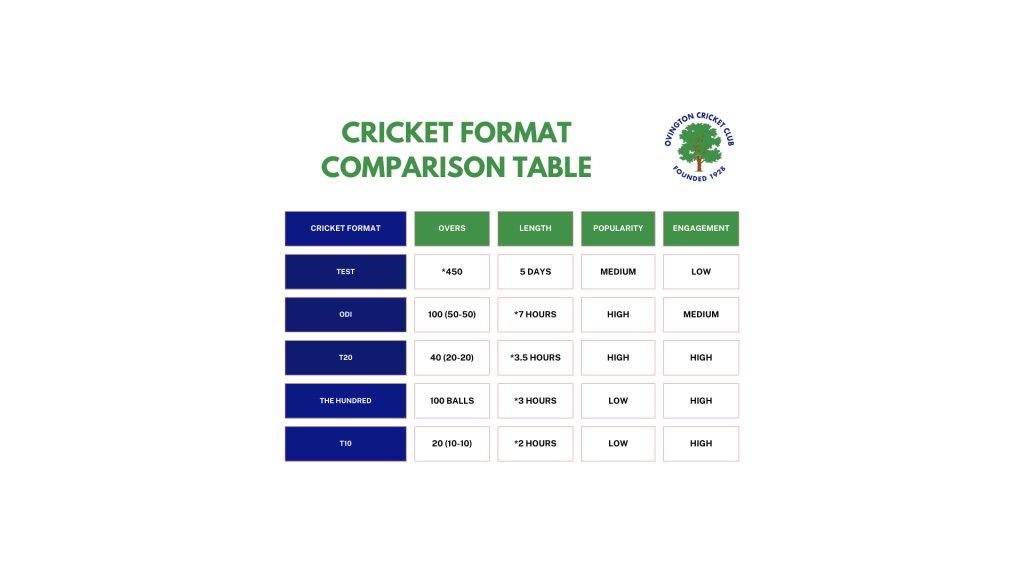
Cricket is a beloved sport worldwide, known for its strategic gameplay and thrilling moments. However, one question often arises among newcomers: how long does cricket last? The duration of a cricket match can vary significantly depending on the format being played. This article will delve into the different formats of cricket – T20, ODI, and Test – exploring their unique characteristics and typical durations.
From the fast-paced action of T20 to the epic battles of Test matches, we’ll provide a comprehensive guide to understanding how long does a cricket game last in each format. By the end of this article, you’ll have a clear grasp of the time commitment involved in each type of cricket match.
T20 Cricket Match Length
T20 cricket is the shortest and most popular format of the game, known for its explosive batting and quick-fire action. Matches typically consist of two innings, with each team having a maximum of 20 overs to bat. An over comprises six legal deliveries bowled by a single bowler.
The fast-paced nature of T20 cricket means matches usually last around 3 hours, making it an ideal format for fans who want a condensed and exciting cricketing experience. The shorter duration also allows for multiple matches to be played within a day, often in tournaments like the Indian Premier League (IPL).
Key Features of T20 Cricket
- Limited Overs: Each team bats for a maximum of 20 overs.
- Fast-Paced Action: Emphasis on aggressive batting and quick scoring.
- Shorter Duration: Matches typically last around 3 hours.
ODI Cricket Match Duration
One Day Internationals (ODIs) are the middle format of cricket, offering a balance between the brevity of T20 and the epic length of Test matches. Each team has 50 overs to bat in an ODI match, resulting in a longer duration compared to T20.
ODI matches typically last around 8 hours, allowing for strategic gameplay, tactical bowling changes, and more opportunities for individual brilliance. The format is popular for international tournaments like the Cricket World Cup, where teams compete over several weeks.
Key Features of ODI Cricket
- 50 Overs per Team: Each team bats for a maximum of 50 overs.
- Strategic Gameplay: More time allows for tactical decisions and adjustments.
- Longer Duration: Matches typically last around 8 hours.
Test Cricket Match Format
Test cricket is the longest and most traditional format of the game, demanding immense skill, stamina, and mental fortitude from players. A Test match consists of two innings per team, played over a period of up to five days.
The extended duration allows for intricate battles between bat and ball, with teams vying for supremacy across multiple sessions. Test matches are often considered the ultimate test of cricketing prowess, showcasing the highest level of skill and strategy in the sport.
Key Features of Test Cricket
- Two Innings per Team: Each team bats twice over a period of up to five days.
- Intricate Battles: Strategic gameplay unfolds across multiple sessions.
- Ultimate Test of Skill: Demands immense physical and mental endurance.
Factors Affecting Match Length
While the format dictates the general duration of a cricket match, several factors can influence its actual length:
- Weather Conditions: Rain delays or interruptions can significantly extend the match time.
- Pace of Play: A fast-paced game with quick wickets can shorten the match duration.
- Team Strategies: Defensive batting or slow bowling can prolong the match.
Conclusion
Understanding how long does cricket last is crucial for both players and fans. From the electrifying 3-hour T20 matches to the epic 5-day Test battles, each format offers a unique cricketing experience. Whether you prefer the fast-paced action or the strategic depth, there’s a cricket match length to suit every taste.
